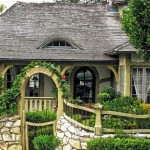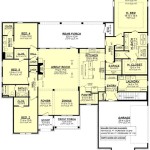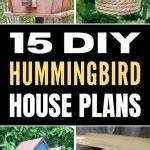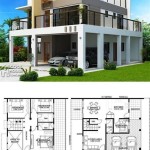Not So Big House Plans, a term coined by architect Sarah Susanka, refer to the design philosophy and practice of creating smaller, more efficient, and environmentally friendly homes. These plans emphasize functionality, sustainability, and livability over size and grandeur.
Not So Big House Plans have been gaining popularity in recent years as people become more aware of the environmental impact of large homes and the financial benefits of owning a smaller property. By reducing the size of their homes, homeowners can save on energy costs, maintenance fees, and property taxes. They can also enjoy a more intimate and comfortable living space.
The main body of this article will explore the benefits of Not So Big House Plans in more detail. We will discuss the different design principles involved, provide examples of Not So Big House Plans, and offer tips on how to create a Not So Big House Plan of your own.
Not So Big House Plans emphasize the following key points:
- Smaller size
- Efficient use of space
- Environmental sustainability
- Functionality
- Livability
- Affordability
- Community
- Flexibility
- Beauty
These principles guide the design of Not So Big House Plans, creating homes that are both comfortable and sustainable.
Smaller size
One of the most important aspects of Not So Big House Plans is their smaller size. Not So Big Houses are typically between 1,000 and 2,500 square feet, which is significantly smaller than the average American home. This smaller size has a number of advantages, including:
**Lower energy costs:** Smaller homes require less energy to heat and cool, which can save homeowners money on their utility bills. According to the U.S. Department of Energy, a 2,500-square-foot home uses about 50% more energy than a 1,500-square-foot home.
**Reduced environmental impact:** Smaller homes have a smaller carbon footprint than larger homes. This is because they require less energy to build and maintain, and they produce less waste.
**Lower maintenance costs:** Smaller homes have less square footage to maintain, which can save homeowners time and money. For example, a smaller home will require less painting, roofing, and siding maintenance.
**More affordable:** Smaller homes are typically more affordable to build and purchase than larger homes. This is because they require less materials and labor to construct.
Efficient use of space
Not So Big House Plans emphasize the efficient use of space. This means that every square foot of the home is used wisely, with no wasted space. This can be achieved through a variety of design techniques, such as:
**Open floor plans:** Open floor plans eliminate unnecessary walls and partitions, creating a more spacious and airy feel. This can make a small home feel much larger than it actually is.
**Multi-purpose rooms:** Multi-purpose rooms can serve a variety of functions, such as a guest room, home office, or playroom. This can help to reduce the overall size of the home while still providing all of the necessary living space.
**Built-in storage:** Built-in storage can help to keep the home organized and clutter-free. This can be achieved through the use of shelves, cabinets, and drawers. Built-in storage can also help to make the home more efficient by providing easy access to items that are used on a regular basis.
**Smart furniture:** Smart furniture is designed to maximize space and functionality. For example, a sofa bed can be used as both a couch and a bed, while a coffee table with built-in storage can be used to store books, magazines, and other items.
By using these and other space-saving techniques, Not So Big House Plans can create homes that are both comfortable and efficient.
Environmental sustainability
Not So Big House Plans are designed to be environmentally sustainable, meaning that they have a minimal impact on the environment. This can be achieved through a variety of design techniques, such as:
- Energy efficiency: Not So Big Houses are typically more energy efficient than larger homes. This is because they require less energy to heat and cool, and they often incorporate energy-saving features such as solar panels, geothermal heating, and energy-efficient appliances.
- Reduced material consumption: Smaller homes require less materials to build than larger homes. This can reduce the environmental impact of the home, as well as the cost of construction.
- Less waste production: Smaller homes produce less waste during construction and demolition. This is because they require less materials and generate less debris.
- Increased durability: Not So Big Houses are often built with durable materials and construction techniques. This can help to extend the life of the home, reducing the need for repairs and replacements.
By incorporating these and other sustainable design features, Not So Big House Plans can help to reduce the environmental impact of housing. This can create a more sustainable future for both people and the planet.
Functionality
Functionality is one of the most important aspects of Not So Big House Plans. This means that the home is designed to meet the needs of the people who live in it, and that it is easy to use and maintain. This can be achieved through a variety of design techniques, such as:
Open floor plans
Open floor plans eliminate unnecessary walls and partitions, creating a more spacious and airy feel. This can make a small home feel much larger than it actually is. Open floor plans also allow for more flexibility in how the space is used. For example, a family room can also be used as a dining room or playroom.
Multi-purpose rooms
Multi-purpose rooms can serve a variety of functions, such as a guest room, home office, or playroom. This can help to reduce the overall size of the home while still providing all of the necessary living space. Multi-purpose rooms can also be used to create more flexible living spaces. For example, a guest room can also be used as a home office when guests are not staying over.
Built-in storage
Built-in storage can help to keep the home organized and clutter-free. This can be achieved through the use of shelves, cabinets, and drawers. Built-in storage can also help to make the home more efficient by providing easy access to items that are used on a regular basis. For example, a built-in bookcase can be used to store books, magazines, and other items that are used frequently.
Smart furniture
Smart furniture is designed to maximize space and functionality. For example, a sofa bed can be used as both a couch and a bed, while a coffee table with built-in storage can be used to store books, magazines, and other items. Smart furniture can also be used to create more flexible living spaces. For example, a coffee table with wheels can be easily moved to create more space for entertaining.
By incorporating these and other functional design features, Not So Big House Plans can create homes that are both comfortable and efficient. This can make a big difference in the quality of life for the people who live in the home.
Livability
Livability is one of the most important aspects of Not So Big House Plans. This means that the home is designed to be comfortable, inviting, and easy to live in. This can be achieved through a variety of design techniques, such as:
Natural light
Natural light can make a home feel more spacious and inviting. Not So Big House Plans often incorporate large windows and skylights to let in as much natural light as possible. This can help to reduce the need for artificial lighting, which can save energy and create a more relaxing atmosphere.
Outdoor living spaces
Outdoor living spaces can extend the living space of a home and make it more enjoyable to spend time outdoors. Not So Big House Plans often include patios, decks, or balconies. These spaces can be used for dining, entertaining, or simply relaxing.
Flexible spaces
Flexible spaces can be used for a variety of purposes, depending on the needs of the people who live in the home. For example, a den can be used as a home office, a playroom, or a guest room. Flexible spaces can help to make a small home feel more spacious and versatile.
Universal design
Universal design features can make a home more accessible and comfortable for people of all ages and abilities. For example, wider doorways, ramps, and grab bars can make it easier for people with disabilities to move around the home. Universal design features can also make it easier for older adults to age in place.
By incorporating these and other livability features, Not So Big House Plans can create homes that are both comfortable and inviting. This can make a big difference in the quality of life for the people who live in the home.
Affordability
Not So Big House Plans are more affordable to build and maintain than larger homes. This is because they require less materials and labor to construct, and they have lower energy costs and maintenance fees.
- Lower construction costs: Not So Big Houses require less materials to build than larger homes. This can save homeowners thousands of dollars on the cost of construction.
- Lower energy costs: Not So Big Houses are more energy efficient than larger homes. This is because they require less energy to heat and cool. Homeowners can save hundreds of dollars on their energy bills each year by living in a Not So Big House.
- Lower maintenance costs: Not So Big Houses have less square footage to maintain than larger homes. This means that homeowners can save time and money on maintenance tasks such as painting, roofing, and siding repair.
- Lower property taxes: Not So Big Houses are typically assessed at a lower value than larger homes. This can result in lower property taxes for homeowners.
By choosing a Not So Big House Plan, homeowners can save money on the cost of construction, energy, maintenance, and property taxes. This can make homeownership more affordable for many people.
Community
Not So Big House Plans can also help to strengthen community ties. This is because smaller homes are more likely to be located in walkable neighborhoods, which can encourage people to interact with their neighbors. Additionally, smaller homes are more affordable, which can make it possible for more people to live in desirable neighborhoods.
- Walkability: Not So Big Houses are often located in walkable neighborhoods. This means that residents can walk to local shops, restaurants, and other amenities. Walkable neighborhoods encourage people to interact with their neighbors and build a sense of community.
- Affordability: Not So Big Houses are more affordable than larger homes. This makes it possible for more people to live in desirable neighborhoods. When people live in close proximity to each other, they are more likely to develop relationships with their neighbors and participate in community activities.
- Shared spaces: Not So Big House Plans often include shared spaces, such as community gardens and courtyards. These spaces can provide opportunities for residents to interact with each other and build a sense of community.
- Community involvement: Not So Big House Plans can encourage community involvement. This is because smaller homes are more likely to be owned by people who are interested in their community and want to be involved in local affairs.
By creating more walkable, affordable, and community-oriented neighborhoods, Not So Big House Plans can help to strengthen community ties and create a more livable and sustainable world.
Flexibility
Not So Big House Plans are flexible and can be adapted to meet the needs of the people who live in them. This can be achieved through a variety of design techniques, such as:
- Open floor plans: Open floor plans eliminate unnecessary walls and partitions, creating a more spacious and airy feel. This can make a small home feel much larger than it actually is. Open floor plans also allow for more flexibility in how the space is used. For example, a family room can also be used as a dining room or playroom.
- Multi-purpose rooms: Multi-purpose rooms can serve a variety of functions, such as a guest room, home office, or playroom. This can help to reduce the overall size of the home while still providing all of the necessary living space. Multi-purpose rooms can also be used to create more flexible living spaces. For example, a guest room can also be used as a home office when guests are not staying over.
- Built-in storage: Built-in storage can help to keep the home organized and clutter-free. This can be achieved through the use of shelves, cabinets, and drawers. Built-in storage can also help to make the home more efficient by providing easy access to items that are used on a regular basis. For example, a built-in bookcase can be used to store books, magazines, and other items that are used frequently.
- Smart furniture: Smart furniture is designed to maximize space and functionality. For example, a sofa bed can be used as both a couch and a bed, while a coffee table with built-in storage can be used to store books, magazines, and other items. Smart furniture can also be used to create more flexible living spaces. For example, a coffee table with wheels can be easily moved to create more space for entertaining.
By incorporating these and other flexible design features, Not So Big House Plans can create homes that can be easily adapted to meet the changing needs of the people who live in them. This can make a big difference in the quality of life for the people who live in the home.
Beauty
Not So Big House Plans are designed to be beautiful, both inside and out. This can be achieved through a variety of design techniques, such as:
- Simple lines and forms: Not So Big Houses often feature simple lines and forms. This can create a sense of elegance and sophistication, even in a small space.
- Natural materials: Not So Big Houses often incorporate natural materials, such as wood, stone, and brick. These materials can add warmth and texture to the home, and they can also help to create a connection to the outdoors.
- Abundant natural light: Not So Big Houses often feature large windows and skylights. This allows for plenty of natural light to enter the home, which can create a bright and airy atmosphere.
- Well-proportioned spaces: Not So Big Houses are designed with well-proportioned spaces. This means that the rooms are not too large or too small, and they flow together in a harmonious way.
By incorporating these and other design elements, Not So Big House Plans can create homes that are both beautiful and functional. This can make a big difference in the quality of life for the people who live in the home.






![Not So Big House Plans [] New Concept](https://i2.wp.com/ilentrivers.com/wp-content/uploads/2017/01/main-floor-plan-not-so-big-house-Silent-Rivers.gif)



Related Posts








